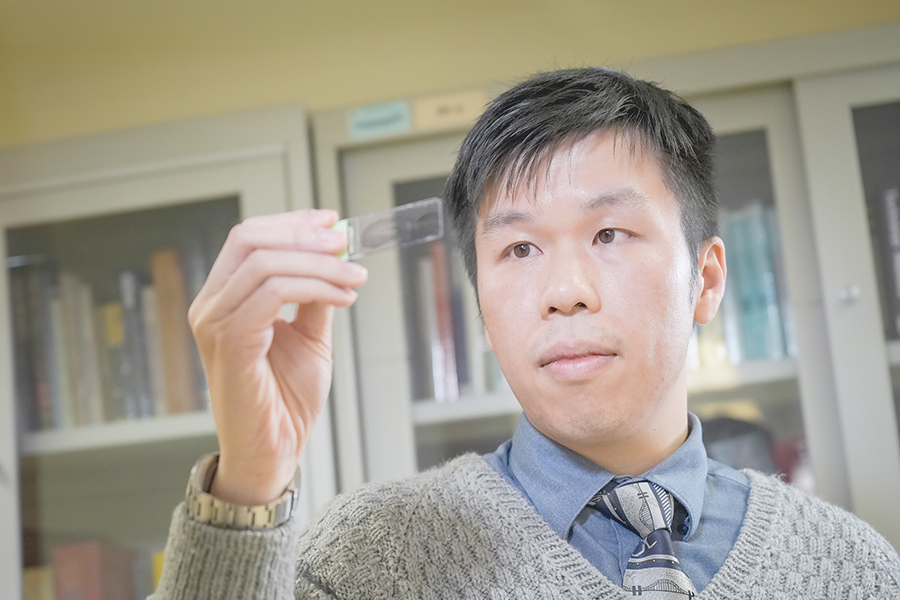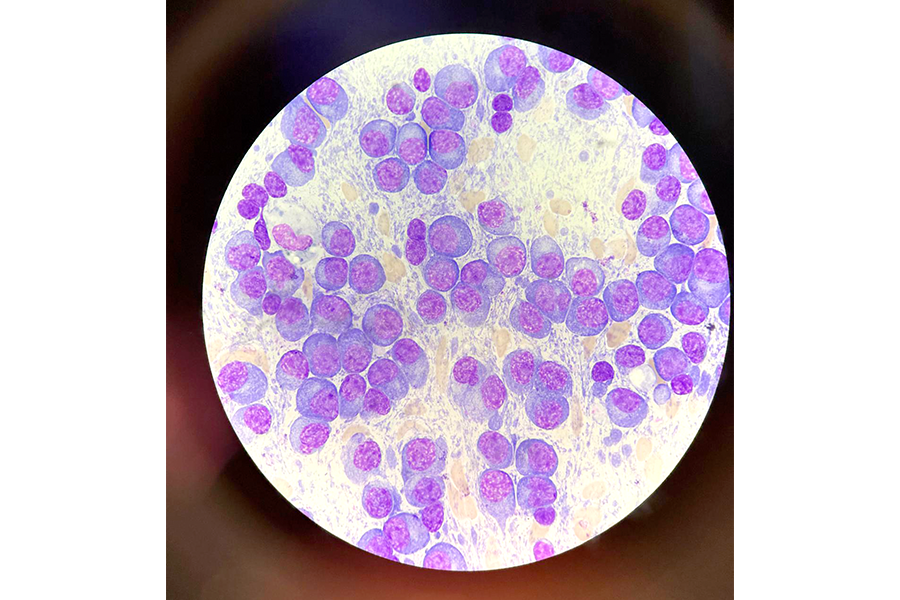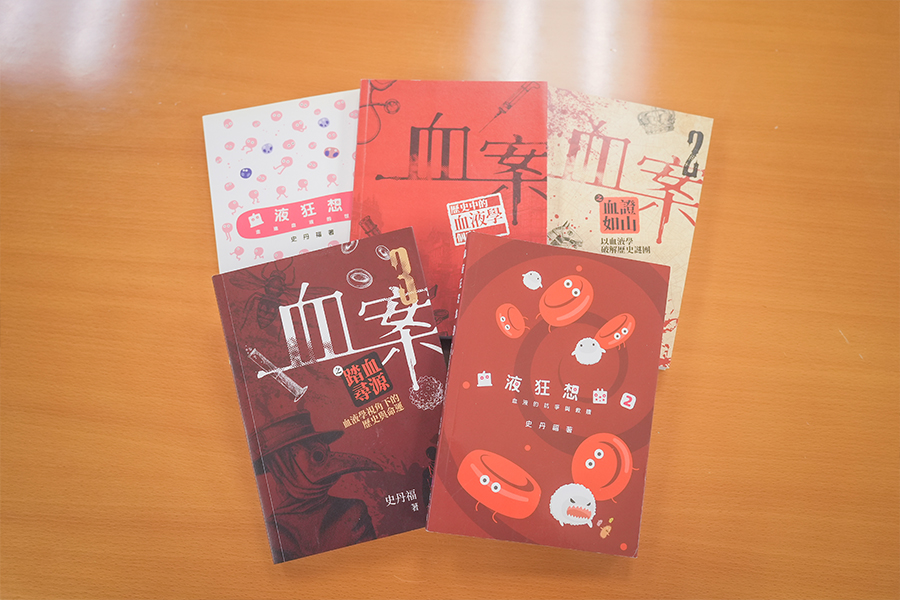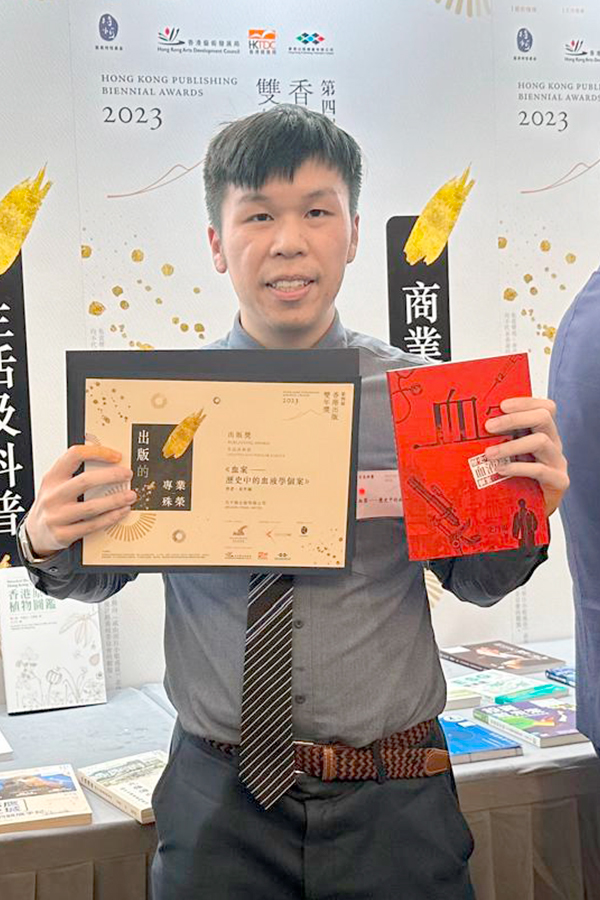Author doctor follows trails of blood to uncover history’s dark secrets
 How did the Spanish Civil War advance the technology of blood transfusions? Why did the United States (U.S.) supply 5,000 litres of plasma to Britain during the Second World War? What is the connection between the fall of the Russian Empire and the transferral of haemophilia B gene from Queen Victoria of England to her descendants? These historical riddles are explored in the literary works of Dr Stanford Li, Associate Consultant of the Department of Pathology at Queen Elizabeth Hospital. As both a haematology specialist and a keen historian, Dr Li – writing under the pen name Dr Stanford – has authored five popular science non-fiction books. His Blood Cases trilogy examines history through the lens of haematology, using the perspective of the microscope to uncover macro-historical narratives.
How did the Spanish Civil War advance the technology of blood transfusions? Why did the United States (U.S.) supply 5,000 litres of plasma to Britain during the Second World War? What is the connection between the fall of the Russian Empire and the transferral of haemophilia B gene from Queen Victoria of England to her descendants? These historical riddles are explored in the literary works of Dr Stanford Li, Associate Consultant of the Department of Pathology at Queen Elizabeth Hospital. As both a haematology specialist and a keen historian, Dr Li – writing under the pen name Dr Stanford – has authored five popular science non-fiction books. His Blood Cases trilogy examines history through the lens of haematology, using the perspective of the microscope to uncover macro-historical narratives.
 Dr Li has had a deep love of science from childhood and his thirst for knowledge and truth led him to pursue a career in pathology. Specialising in haematology, he examines patients’ blood and bone marrow cells under a microscope, searching for pathological clues such as signs of parasitic infections, chromosomal changes, or antigen reactions on cell surfaces. With his love of literature, he likens frontline doctors to fierce warriors like Zhang Fei and Guan Yu from the historical novel Romance of the Three Kingdoms. In contrast, he compares pathologists to Zhuge Liang, the mastermind who strategises behind the scenes.
Dr Li has had a deep love of science from childhood and his thirst for knowledge and truth led him to pursue a career in pathology. Specialising in haematology, he examines patients’ blood and bone marrow cells under a microscope, searching for pathological clues such as signs of parasitic infections, chromosomal changes, or antigen reactions on cell surfaces. With his love of literature, he likens frontline doctors to fierce warriors like Zhang Fei and Guan Yu from the historical novel Romance of the Three Kingdoms. In contrast, he compares pathologists to Zhuge Liang, the mastermind who strategises behind the scenes.
His fascination with the intricacies of haematology initially spurred Dr Li to publish articles online. He then wrote his first book, Blood Rhapsody, in 2020 and went on to develop the Blood Cases series which explores haematological knowledge through historical figures and events. “Seemingly unrelated fields are actually interconnected,” he explains. “History is shaped by people, and whether they are great leaders, rulers, or political figures, they are all flesh and blood. Blood disorders can not only influence individual destinies but also rewrite history.”
 Dr Li’s passion for history began in his youth when he learnt about the Second World War through video games including Call of Duty and Battlefield. His reading and film-watching habits also provide inspiration for his writing. For instance, while watching The Crown, he learnt about the death of King George VI. He delved into medical research and concluded the king might have died from complications related to lung cancer, such as pulmonary embolism or severe intrathoracic haemorrhage. This prompted him to explore the topic further in his books, even linking it to modern lung cancer treatments and haematological principles behind targeted therapy.
Dr Li’s passion for history began in his youth when he learnt about the Second World War through video games including Call of Duty and Battlefield. His reading and film-watching habits also provide inspiration for his writing. For instance, while watching The Crown, he learnt about the death of King George VI. He delved into medical research and concluded the king might have died from complications related to lung cancer, such as pulmonary embolism or severe intrathoracic haemorrhage. This prompted him to explore the topic further in his books, even linking it to modern lung cancer treatments and haematological principles behind targeted therapy.
Conversely, his research in haematology often leads him to historical connections. While studying the anticoagulant drug warfarin, he discovered the former U.S. President Dwight D. Eisenhower was among its early users—another potential story waiting to be told.
Inspiring young minds through history and haematology
Dr Li’s popular science books cover topics such as red blood cell disorders and leukaemia, planting the seeds of curiosity in young minds and inspiring students to explore haematology. His works have been awarded third and seventh place in the ‘Top Ten Book Picks’ for secondary school students. Some students say they had no understanding of haematology but realised its relevance to everyday life after reading his books – and some have even been inspired to pursue careers in healthcare or haematology. “As a child, I loved reading popular science books, but most of them were translated from foreign works,” he recalls. “Back then, I wished that one day I could publish a locally written popular science book.” The publication of Blood Rhapsody saw his dream of becoming an author come to life – and his journey into the world of literature is moving forward, chapter by mesmerising chapter.
“As a child, I loved reading popular science books, but most of them were translated from foreign works,” he recalls. “Back then, I wished that one day I could publish a locally written popular science book.” The publication of Blood Rhapsody saw his dream of becoming an author come to life – and his journey into the world of literature is moving forward, chapter by mesmerising chapter.
Interview video